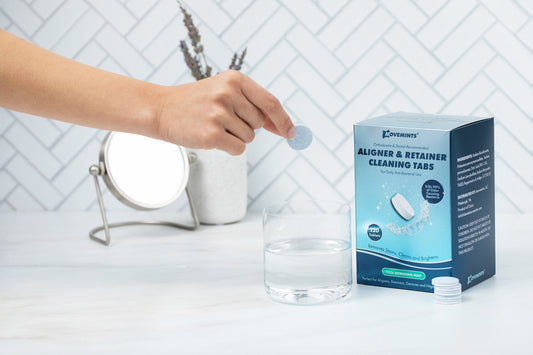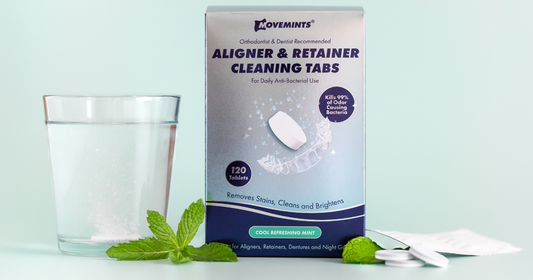Why Invisalign Tracking is Crucial for Tooth Movement
Clear aligners are designed to fit tightly over your teeth and gradually move them into their correct position. But, what if your aligners aren’t fitting quite right?
Invisalign tracking is the technical term for how well your aligners fit your teeth. Proper tracking is essential for optimal tooth movement because if your trays don’t fit, they can’t provide the degree of orthodontic force required to realign your smile. Because tracking is such an important part of treatment, we are taking the time to describe the causes of improper Invisalign tracking, how you can tell if Invisalign is tracking, and what to do if your Invisalign is not tracking.
Common Causes of Improper Invisalign Tracking
Learn more about some of the causes and consequences of improper tracking
![]()
If your aligners aren’t tracking correctly, it doesn’t necessarily mean your Invisalign doesn’t work. And if they’re extremely tight, that doesn’t necessarily mean they are tracking correctly either! Clear aligners should follow the “Goldilocks Rule” and neither be too tight nor too loose. While you may feel significant tightness and possibly Invisalign pain when you switch to a new set of trays, severe discomfort means you should consult your provider.
On the other hand, if your aligners are too loose then you run the risk of extending your treatment time and potentially needing Invisalign refinements to get back on track. If you see large gaps between your trays and the edges of your teeth, this may mean that your impressions were inaccurate, or your teeth aren’t able to move the way your orthodontist intended.
While orthodontists have tools like Invisalign attachments to help move stubborn teeth, you should take measures to ensure your trays are tracking if you want your Invisalign journey to be as smooth as possible.
Not Wearing Your Aligners for The Recommended Time
Invisalign can move your teeth just as well as braces, but only if you wear them for the recommended 22+ hours per day. The two hours you are not wearing your Invisalign are designated for eating and drinking, but you should wear your aligners for as many hours as possible each day to stay on track with your treatment.
If you leave your aligners out for too long, your teeth can shift in small increments which leads to tracking issues. If your teeth are shifting outside of your aligners and you are having issues with tracking, it's a sign your aligners could be pushing your teeth further off course.
Your Teeth are Crowding
Sometimes when you are undergoing Invisalign treatment, it can cause your teeth to crowd slightly. When this crowding occurs, it often results in improper tracking. When crowding occurs, you should talk to your orthodontist to discuss how your treatment should proceed. In some cases your orthodontist will need to perform a procedure called an interproximal reduction. During this procedure, your dentist will shape your crowding teeth to prevent further collision.
Your Teeth Aren’t Moving As Expected
Even with the precision technology used to create Invisalign clear aligners, orthodontic treatment is not an exact science. Sometimes teeth move in unexpected ways, which can prolong your Invisalign treatment. If your teeth aren’t moving as expected, your orthodontist may recommend attachments or rubber bands to get you back on track. So if you notice your Invisalign isn't tracking properly, don’t put it off; seek the advice of your orthodontic professional as soon as possible.
How You Can Get Your Teeth Back on Track
With a few tricks and the help of your orthodontist, you can improve your Invisalign tracking
When your Invisalign isn’t tracking, there is a high chance that your teeth are not moving into the correct position. That’s why proper Invisalign tracking is so important for patients. So if you find yourself having trouble “seating” your aligners (which means getting them to fit correctly on your teeth), try these tips to get your Invisalign tracking again.
Visit Your Orthodontist
If you've moved on to your next set of aligners and they’re not fitting properly, the cause could be your previous set of aligners. In this case, you should visit your orthodontist to get some advice. In some cases, your orthodontist may recommend “backtracking” your aligners. Backtracking means that you wear your previous aligner for a bit longer until your teeth are ready for the next step. It is always best to get advice directly from your orthodontist before making any adjustments to your treatment, otherwise you could seriously set back your smile journey.
Use Movemints® to Properly Seat Your Aligners
The best way to prevent Invisalign tracking issues in the first place is to make sure to seat your trays every time you put them in. Your provider may have given you a small piece of rubber foam to bite on until you hear your aligners “click” into place. These devices do serve their purpose, but they aren’t great for patients on the go and require regular cleaning and maintenance.
That’s why we created Movemints, an alternative to Invisalign chewies that freshen breath and fight dry mouth while also seating your aligners. Movemints are a xylitol candy designed by an orthodontist with a patented groove that fits conveniently between your trays. Whenever you reinsert, just pop in one of our mints, bite down gently until your aligners click into place, and then enjoy the breath freshening power of mint! With a therapeutic dose of xylitol, you can enjoy Movemints while wearing your trays.

Stick to The Recommended Wear Time
If you’ve accidentally gotten off track before, it's time to really commit to wearing your aligners all the time. Though it is recommended you wear them for 22 hours per day, you should wear them as much as possible. The longer you take out your aligners, the more you put yourself at risk for improper tracking and unpredictable tooth pressure.
If your Invisalign journey isn’t perfect, that's okay! By following our tips, you’ll have your Invisalign tracking properly in no time at all. For more Invisalign tips and tricks, check out our Movemints blog to answer every question you have about straightening your teeth with clear aligners!




